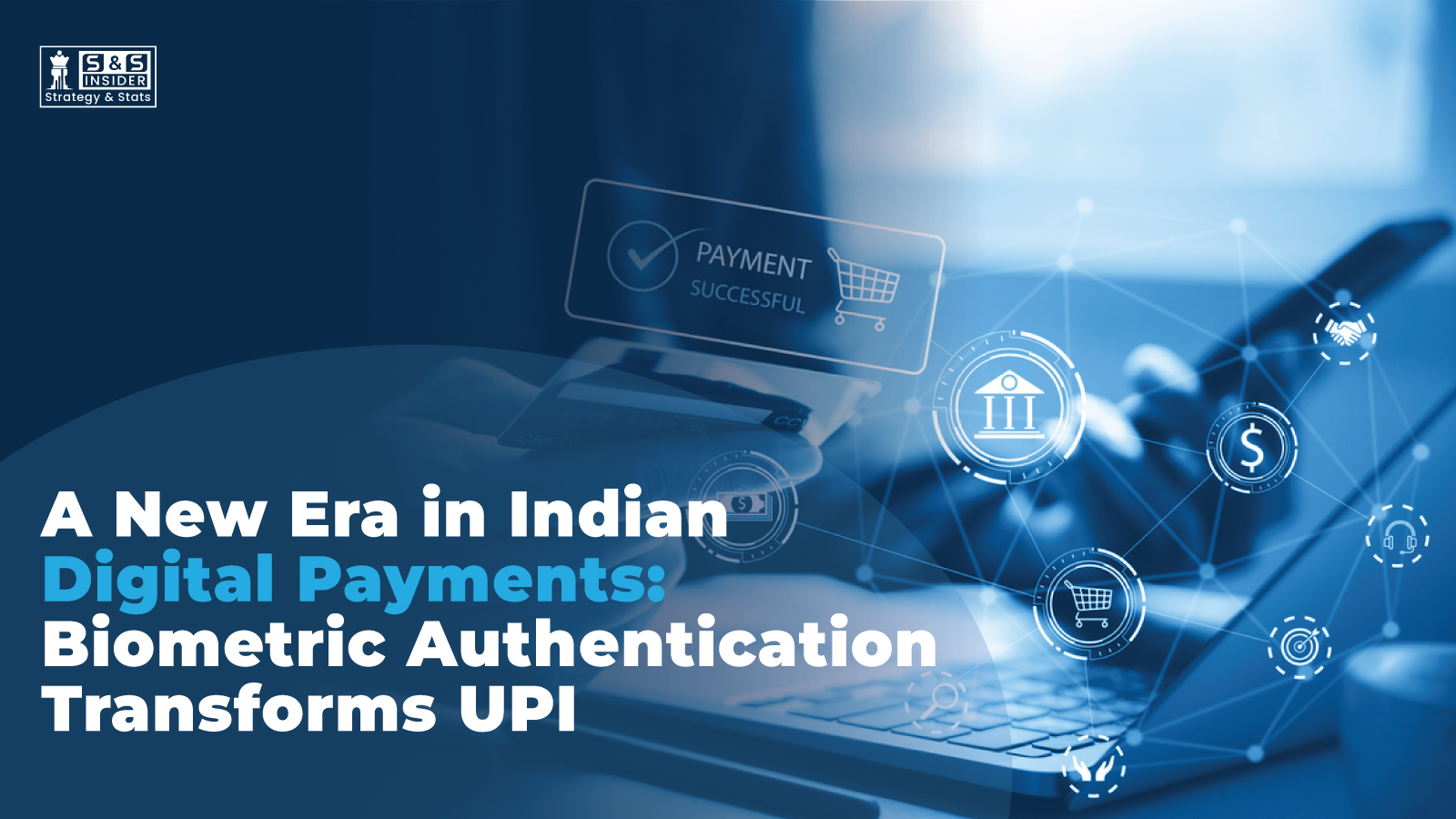
The implementation of biometric authentication for Unified Payments Interface (UPI) transactions is significantly altering India's digital payments landscape. Millions of Indian customers would be able to validate their UPI payments using fingerprint or face recognition scans as an alternative to entering a conventional numeric PIN as of October 8, 2025. This ground-breaking move seeks to increase the speed, security, and inclusivity of digital payments nationwide.
What is Changing in UPI Authentication?
Launched in 2016, UPI is presently the most popular payment system in India. To authorize transactions, customers must enter a 4- or 6-digit PIN. A state-of-the-art biometric authentication system is now being implemented by the National Payments Corporation of India (NPCI), which operates the UPI network. By comparing their live fingerprint or facial recognition with biometric information safely recorded in the Government of India's Aadhaar system, users starting UPI transactions will be able to confirm payments.
This new biometric technology choice is intended to be smooth and intuitive. On compatible devices, users can easily authenticate using their biometrics rather than repeatedly inputting the PIN by hand. Crucially, biometric data processing will take place on the user's device, guaranteeing that the biometric data remains private and safe without being shared or retained with NPCI or banks. Additionally, users maintain complete control over whether to engage or stop biometric authentication at any time.
How Aadhaar Biometrics Powers This Innovation:
More than a billion Indian citizens' biometric information, including fingerprints, iris scans, and facial data, is already stored in the Aadhaar system. The biometric payment verification feature is based on this remarkable database. When a user chooses biometric authentication, the system verifies identity and authorizes the payment by comparing the user's encrypted Aadhaar information with their scanned fingerprint or face characteristics.
This integration with Aadhaar expedites every financial transaction by doing away with the requirement to input a PIN. Security can be improved by substituting a uniquely personal biometric component for secret codes. Biometric qualities are almost impossible to duplicate or abuse, but PINs can be exchanged, forgotten, or stolen.
RBI’s Progressive Role and Regulatory Framework:
The introduction complies with new Reserve Bank of India (RBI) regulations that allow for technology-neutral and alternative authentication techniques in addition to the conventional PIN and OTP. For the convenience of users, banks and fintech companies can develop safe biometric and device-based authentication techniques due to this legislative freedom.
In order to guarantee the highest level of security, RBI's system requires thorough cryptographic verification for each transaction. In order to preserve the network's integrity and reliability, NPCI states that every biometric-authenticated transaction will be independently confirmed by the issuing bank using strict security procedures.
Features and Benefits of Biometric UPI Authentication
The new next generation biometric payment system is expected to transform India’s digital payment experience profoundly:
Speed and Convenience: Users can complete transactions quickly without typing PINs, improving usability especially in contactless and mobile-first environments.
Enhanced Security: Biometrics drastically reduce fraud risk, as unique fingerprints or facial patterns cannot be easily copied or stolen like PINs or passwords.
Greater Financial Inclusion: Senior citizens, rural users, and those with limited digital literacy who find it difficult to remember or enter PINs will now experience easier access to digital payments.
Optional Use: The system preserves choice by allowing users to continue using PIN-based authentication if preferred or switch to biometrics anytime.
Moreover, biometric authentication will extend beyond payments. Users will soon be able to set or reset their UPI PIN via face recognition, and even withdraw cash from ATMs using biometrics, opening doors to broader use cases and convenience.
NPCI’s Launch and Innovation Showcase:
The biometric feature was unveiled at the Global Fintech Festival 2025 in Mumbai by the Department of Financial Services Secretary M. Nagaraju, underscoring this as a milestone in India’s digital journey. The event also introduced complementary innovations such as wearable device payments and multi-signatory UPI accounts for joint usage, highlighting NPCI’s commitment to creating a secure, seamless, and inclusive digital payments ecosystem.
The push towards biometric UPI payments aligns with India’s broader Digital India initiative to drive a cashless economy and technology-led financial empowerment.
What This Means for Users and the Future:
This translates into a simpler, quicker, and safer payment process for Indian customers. Digital transaction friction brought on by misplaced or compromised PINs will drastically reduce. Faster payment clearing will increase overall commerce efficiency for businesses and merchants.
This change also reflects a broader global trend in authentication technologies, as biometrics are gradually taking the place of traditional passwords and PINs due to their convenience and security. India is particularly positioned to spearhead this digital payment revolution due to its size and Aadhaar infrastructure.
As more users adopt biometric UPI authentication, the system is expected to evolve with continuous technology improvements and expanded interoperability across financial services.
Conclusion:
This new biometric authentication feature for UPI payments marks a turning point in India’s digital finance landscape, reflecting a future where payments are not only faster and safer but also accessible to every citizen through cutting-edge technology. With Aadhaar-powered biometrics and strong regulatory backing, India is set to deepen digital financial inclusion and lead global innovation in secure instant payments.